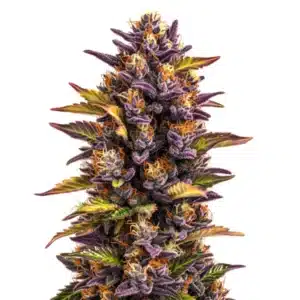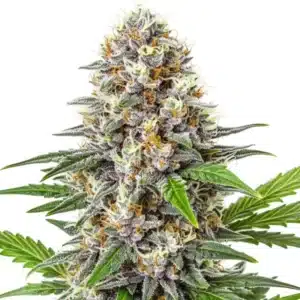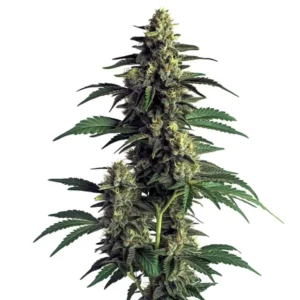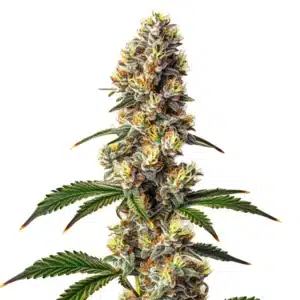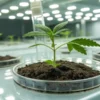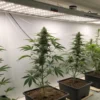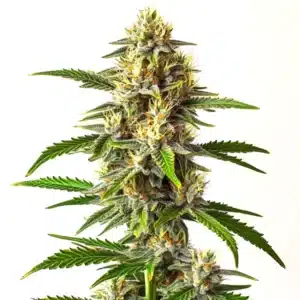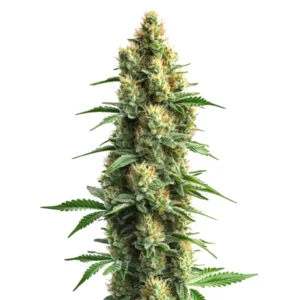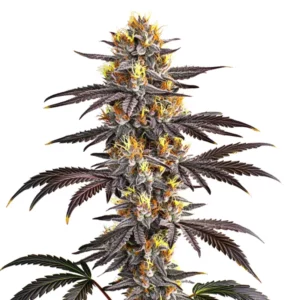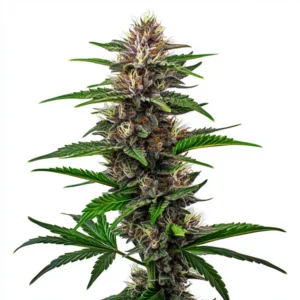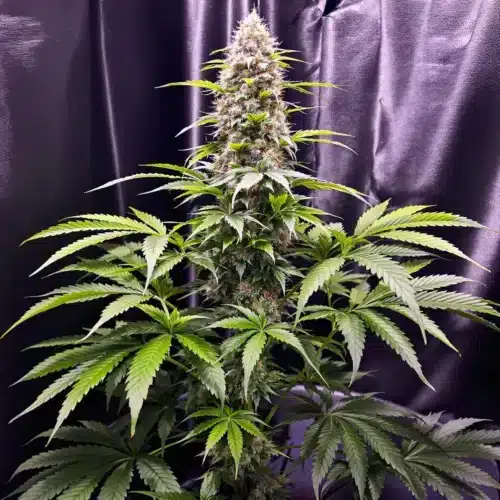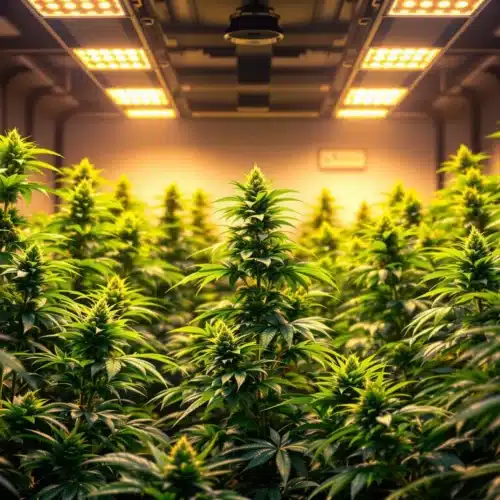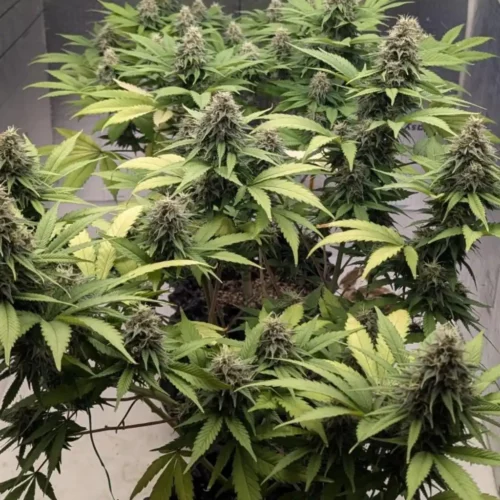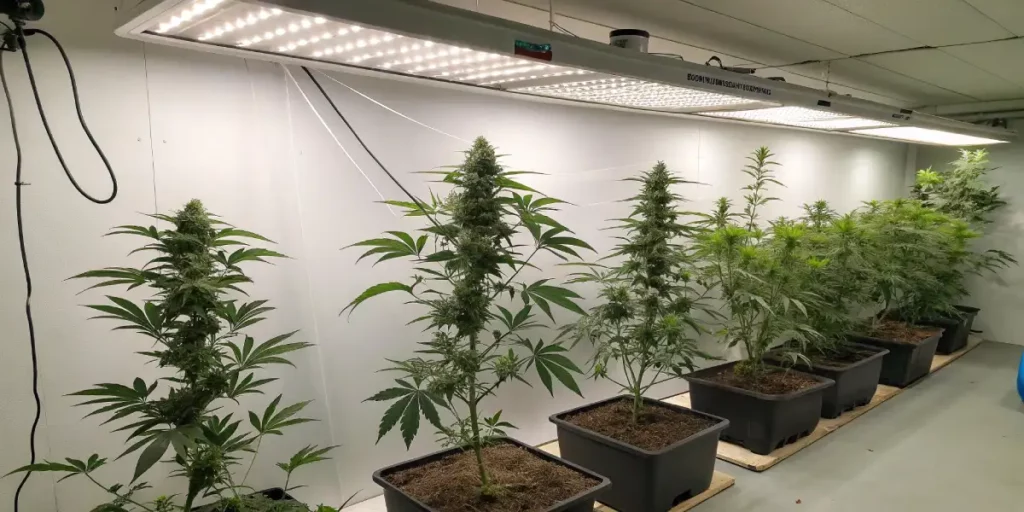
Gibberellins Cannabis Growth: A Detailed Look
Whether you’re a novice cannabis farmer or a seasoned grower, you’ve probably heard about the potential benefits of using Gibberellins cannabis growth. With the right knowledge and application, Gibberellins can significantly boost your yield and improve the quality of your cannabis plants. But what exactly are Gibberellins and how do they affect cannabis growth?
Gibberellins are a group of plant hormones that play a critical role in various growth and development processes. They’re known to influence stem elongation, germination, dormancy, flowering, sex expression, enzyme induction, and leaf and fruit senescence. In cannabis cultivation, these hormones can help in promoting growth, improving yields, and enhancing the overall health and vitality of the plants.
Let’s delve deeper into the effects of Gibberellins on cannabis growth and how you can use them to your advantage in your cannabis cultivation journey. We’ll also touch on some of the best cannabis strains from Blimburn Seeds that can benefit from the use of Gibberellins.
Effects of Gibberellins on Cannabis Growth
When used correctly, Gibberellins can positively impact the growth and development of your cannabis plants. One of the most notable effects of Gibberellins on cannabis growth is its ability to stimulate cell division and elongation. This leads to taller plants with longer internodal spaces, which can potentially result in bigger and better yields. Gibberellins also play a role in the breaking of seed dormancy, promoting faster and more efficient germination.
Another significant effect of Gibberellins is its influence on the flowering stage of cannabis plants. By manipulating the levels of Gibberellins, growers can control the timing of the flowering phase, giving them more control over the growth cycle of their plants.
The effects of Gibberellins on cannabis growth extend beyond the visible plant growth. They also impact the physiological processes within the plant, enhancing nutrient uptake and promoting the production of important enzymes. This, in turn, improves the overall health and productivity of the plants.
Grasping the effects of Gibberellins on cannabis growth is key to harnessing their potential. As a grower, having this knowledge allows you to tweak your cultivation strategies to maximize the benefits of these plant hormones for your cannabis plants.
Using Gibberellins for Cannabis Plant Development
Using Gibberellins for cannabis plant development can give growers an upper hand, especially when growing cannabis strains that are known for their tall and lanky growth pattern. Strains like the ‘Critical+’ and ‘Orka’ from Blimburn Seeds, which are known for their tall stature, can particularly benefit from the use of Gibberellins. This is particularly beneficial for enhancing Gibberellins cannabis growth, ensuring stronger and more robust plants.
When applying Gibberellins, it’s important to ensure that it’s done during the vegetative stage of the cannabis plant. This is when the plant is actively growing, and the Gibberellins can have the most impact on promoting cell division and elongation. However, it’s crucial to note that like any other plant hormone, Gibberellins should be used in moderation. Excessive use can lead to overly tall and lanky plants that are unable to support their own weight.
Using Gibberellins for cannabis plant development is a strategic decision that requires careful consideration. Before applying these hormones, it’s important to understand the specific needs of your cannabis strain and the environmental conditions in your cultivation area. This allows you to use Gibberellins in a way that complements your plant’s growth cycle and optimizes your yield.
Furthermore, using Gibberellins for cannabis plant development is not a one-time solution. Consistent monitoring and adjustments are necessary to ensure that the plants are responding well to the treatment and not suffering from any adverse effects.
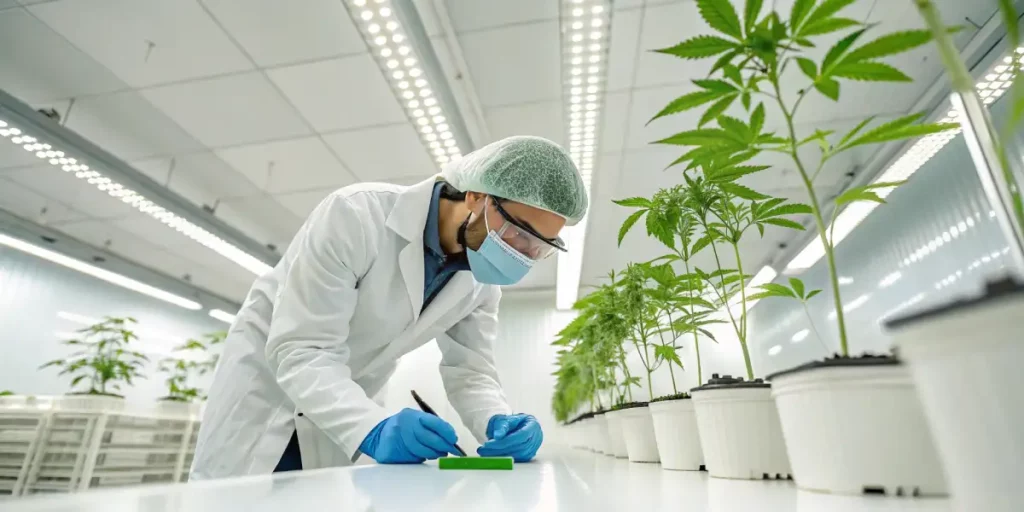
Benefits of Gibberellins in Cannabis Cultivation
The benefits of Gibberellins in cannabis cultivation are numerous. As mentioned earlier, one of the significant advantages is the potential increase in yield. By promoting cell division and elongation, Gibberellins can lead to taller plants with more branching. These additional branches can host more buds, thereby improving your overall yield. Additionally, the use of Gibberellins can lead to faster germination and shorter flowering time, allowing for multiple harvests within a year.
Gibberellins can also be beneficial in overcoming the challenges posed by certain environmental conditions. For instance, if you’re growing a cannabis strain like ‘Wombat‘ from Blimburn Seeds, which thrives in warm climates, the use of Gibberellins can help the plant adapt to cooler conditions by promoting faster growth and development.
The benefits of Gibberellins in cannabis cultivation extend beyond the physiological improvement of the plant. They also play a role in the economic aspects of cannabis farming. For instance, by shortening the flowering time, growers can optimize their production cycles and potentially increase their profit margins, ultimately enhancing Gibberellins cannabis growth.
Moreover, using Gibberellins in cannabis cultivation can reduce the need for physical manipulation of the plants. For example, instead of using trellising or training techniques to manage plant height, growers can use Gibberellins to naturally control plant growth, thereby saving time and effort.
Promos & Deals
Role of Gibberellins in Cannabis Plant Maturation
The role of Gibberellins in cannabis plant maturation is multifaceted. Gibberellins not only influence the growth phase but also have a significant impact on the maturation and flowering stages of the cannabis plant. By affecting the transition from vegetative growth to the flowering stage, Gibberellins can help ensure that your cannabis plants mature at the right time, maximizing their yield potential.
Moreover, Gibberellins can influence the sex expression of cannabis plants. While the specifics are still under research, some studies suggest that higher levels of Gibberellins can lead to more male flowers, while lower levels promote female flower development.
Comprehending the function of Gibberellins in cannabis plant maturation also provides insights into the hormonal balance within the plant. By manipulating the levels of Gibberellins at different stages of growth, growers can influence not only the size and yield of the plant but also the quality of the final product.
It’s also important to note that the role of Gibberellins in cannabis plant maturation doesn’t stop at the flowering stage. Even during the curing and storage phases, Gibberellins can influence the degradation of chlorophyll, affecting the color and flavor of the buds.
Influence of Gibberellins on Cannabis Yield Production
The influence of Gibberellins on cannabis yield production is primarily through its impact on plant growth and development. By promoting cell division and elongation, Gibberellins can lead to taller plants with more branches. More branches mean more sites for bud formation, leading to an increase in yield. Additionally, Gibberellins can stimulate faster germination and shorten the flowering time, allowing for more harvests within a given period. This makes Gibberellins cannabis growth an important factor in optimizing overall plant productivity.
However, it’s important to remember that while Gibberellins can be beneficial, they’re not a magic solution for high yield. Other factors, such as proper nutrition, light, water, and pest management, are also crucial for maximizing your cannabis yield production.
The influence of Gibberellins on cannabis yield production also depends on the grower’s ability to correctly apply and manage these hormones. Inappropriate use of Gibberellins can lead to imbalances within the plant, affecting its overall health and potentially lowering the yield.
Lastly, it’s important to consider the potential long-term effects of Gibberellins on cannabis yield production. While the initial results may be promising, over-reliance on these hormones without proper management could lead to unwanted side effects, such as resistance or reduced responsiveness to Gibberellins.
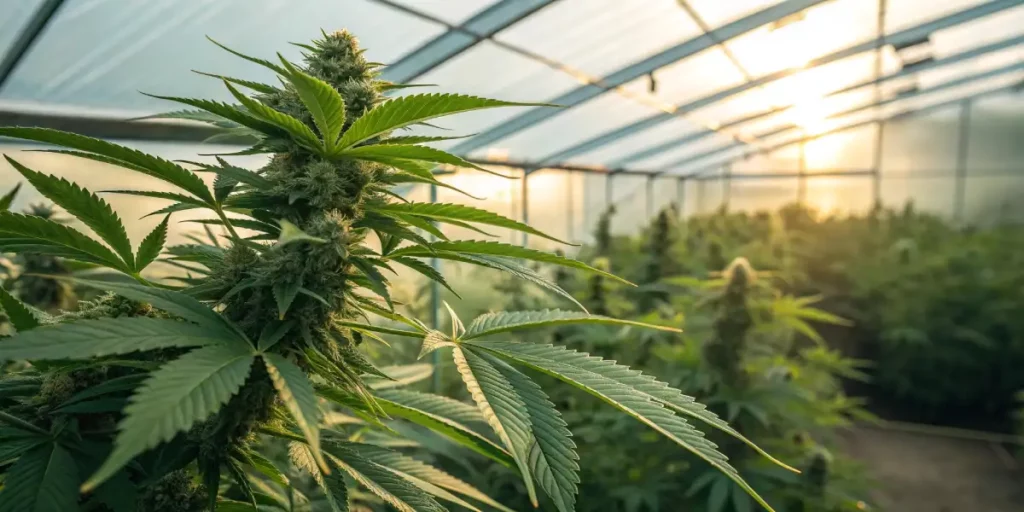
FAQs About Gibberellins Cannabis Growth
How Do I Apply Gibberellins to My Cannabis Plants?
Applying Gibberellins to your cannabis plants is a relatively straightforward process. You can purchase Gibberellin powder or solution from a reputable source. These are typically mixed with water and applied to the plants as a foliar spray during the vegetative stage. It’s essential to follow the manufacturer’s instructions regarding the concentration and frequency of application.
Remember, while Gibberellins can be beneficial, overuse can lead to overly tall and lanky plants that are unable to support their own weight. Thus, moderation is key when using Gibberellins for cannabis plant development.
It’s also worth noting that the method of applying Gibberellins can vary depending on the specific needs of your cannabis plants. For instance, some growers may prefer to apply Gibberellins directly to the soil, while others might opt for foliar sprays. Regardless of the method, it’s crucial to ensure that the plants receive the right amount of Gibberellins at the right time.
Also, be aware that the effectiveness of Gibberellins can be influenced by other factors such as pH levels and temperature. Therefore, it’s important to take these factors into account when planning your Gibberellins application strategy.
Can I Use Gibberellins on All Cannabis Strains?
While Gibberellins can be used on all cannabis strains, they’re particularly beneficial for strains known for their tall and lanky growth pattern. Strains like ‘Critical Mass Auto‘ and ‘Orka‘ from Blimburn Seeds can particularly benefit from the use of Gibberellins. However, it’s always a good idea to do a small test run before applying it to all your plants, as different strains may react differently to Gibberellins.
Remember, the goal of using Gibberellins is to enhance your cannabis plant’s natural growth and development, not to force it into an unnatural growth pattern. Thus, it’s crucial to observe your plants carefully and adjust your Gibberellins application accordingly.
Additionally, it’s important to consider the specific growth habits of each strain before using Gibberellins. Some strains may naturally have a bushier growth pattern and may not benefit from the stem elongation promoted by Gibberellins. Similarly, strains that are naturally short and compact may become overly tall and lanky if Gibberellins are overused.
Ultimately, the use of Gibberellins in cannabis cultivation should be a tool to enhance the natural attributes of the plant, rather than a means to drastically alter its growth pattern. By comprehending the needs of each strain, growers can effectively use Gibberellins to improve their cannabis growth.
Are There Any Potential Side Effects of Using Gibberellins?
Like any other plant hormone, Gibberellins should be used in moderation. Overuse can lead to overly tall and lanky plants that are unable to support their own weight. Excessive use of Gibberellins can also potentially disrupt the natural growth cycle of the plant, leading to issues like delayed flowering or reduced yield.
It’s also worth noting that while Gibberellins can help overcome certain environmental challenges, they’re not a substitute for proper plant care. Other factors, such as light, water, nutrition, and pest management, are also crucial for healthy cannabis growth and development.
Moreover, Gibberellins, like other plant hormones, can have varying effects on different plant species and even different strains within the same species. Therefore, it’s essential to closely monitor your plants for any potential side effects and adjust your Gibberellins application accordingly.
Lastly, while Gibberellins can have a significant impact on cannabis growth and yield, they should not be viewed as a silver bullet solution. Successful cannabis cultivation requires a holistic approach, taking into account all the aspects of plant care and management.
Can I Use Gibberellins in Conjunction with Other Plant Hormones?
Yes, Gibberellins can be used in conjunction with other plant hormones like auxins and cytokinins. In fact, these hormones often work together to regulate various growth and development processes in plants. However, it’s crucial to understand the functions of these hormones and their interactions before using them together.
For example, while Gibberellins promote cell division and elongation, auxins regulate the direction of this growth. Thus, using these hormones in the right combination can help you achieve the desired growth pattern for your cannabis plants. However, as always, moderation is key, and it’s essential to closely monitor your plants when using multiple hormones.
Also, keep in mind that each plant hormone has a unique role in plant growth and development. By using them in conjunction, you can create a more balanced and efficient growth environment for your cannabis plants. However, this requires a deep knowledge of each hormone’s function and the ability to monitor and adjust their levels as needed.
Lastly, while using Gibberellins in conjunction with other plant hormones can enhance cannabis growth and development, it’s important to remember that these hormones are just one aspect of a successful cultivation strategy. Proper nutrition, water management, light conditions, and pest control are also critical elements that should not be overlooked.
How Can I Maximize the Benefits of Gibberellins in My Cannabis Cultivation?
To maximize the benefits of Gibberellins in your cannabis cultivation, it’s important to use them correctly and at the right time. Applying Gibberellins during the vegetative stage of the cannabis plant can have the most impact on promoting cell division and elongation. However, remember to use them in moderation to avoid overly tall and lanky plants.
Also, remember that while Gibberellins can enhance cannabis growth and development, they’re not a substitute for proper plant care. Ensuring your plants receive adequate light, water, nutrition, and pest management is crucial for healthy cannabis growth and maximizing your yield production.
Furthermore, it’s important to consider the long-term effects of using Gibberellins in your cannabis cultivation. Over-reliance on these hormones without proper management could lead to unintended consequences, such as resistance or reduced responsiveness to Gibberellins. Therefore, it’s crucial to use these hormones as part of a thorough cannabis cultivation strategy that takes into account all aspects of plant growth and care.
Lastly, while Gibberellins can significantly enhance cannabis growth and yield, they should not be viewed as a replacement for good cultivation practices. Proper soil preparation, nutrient management, light control, and pest management remain crucial for successful cannabis cultivation. By integrating Gibberellins into your cultivation practices, you can enhance these efforts and potentially achieve greater yields and healthier plants.

